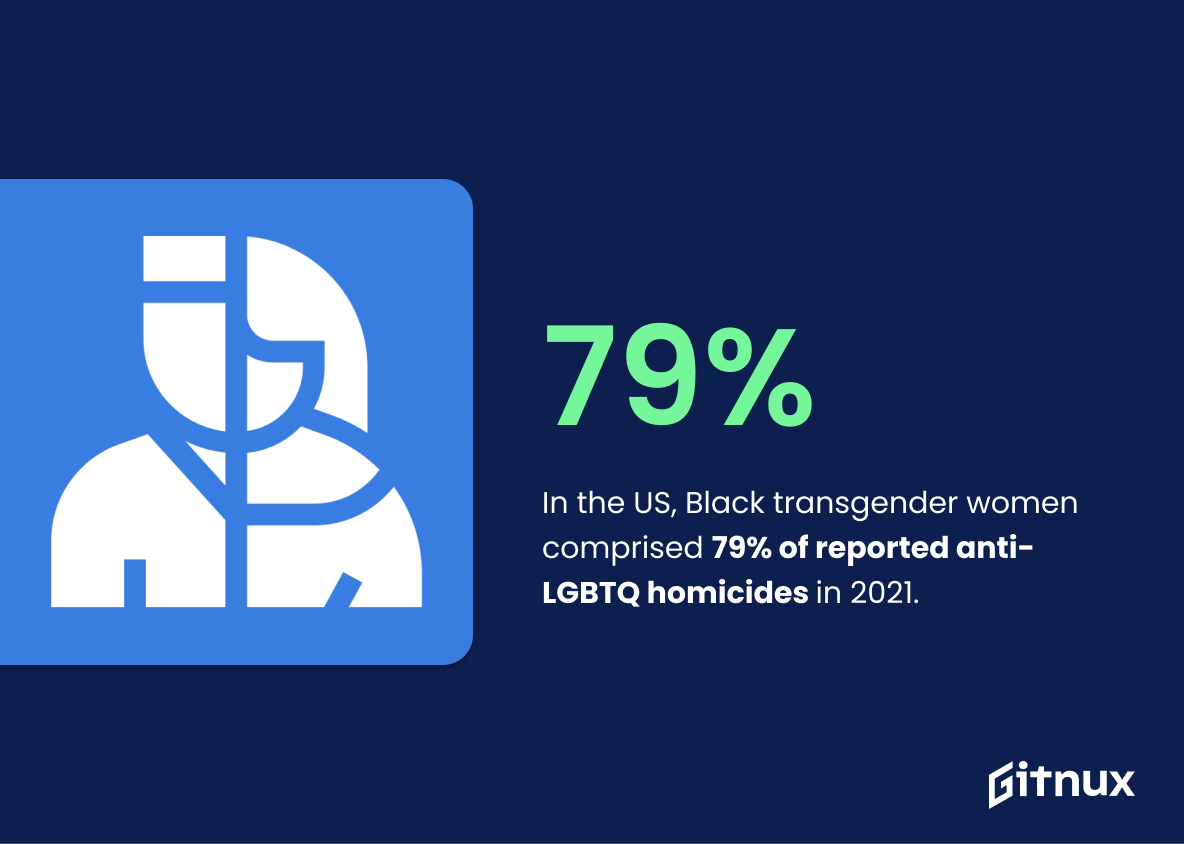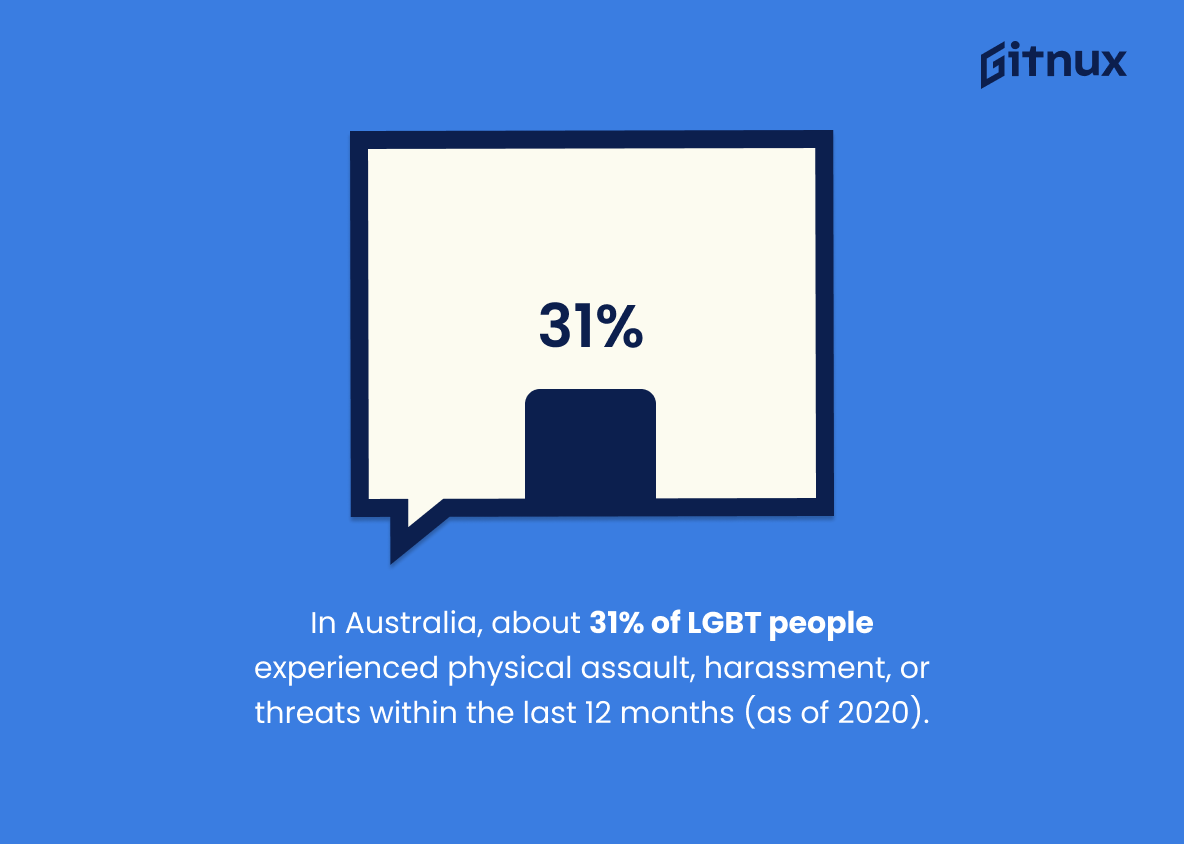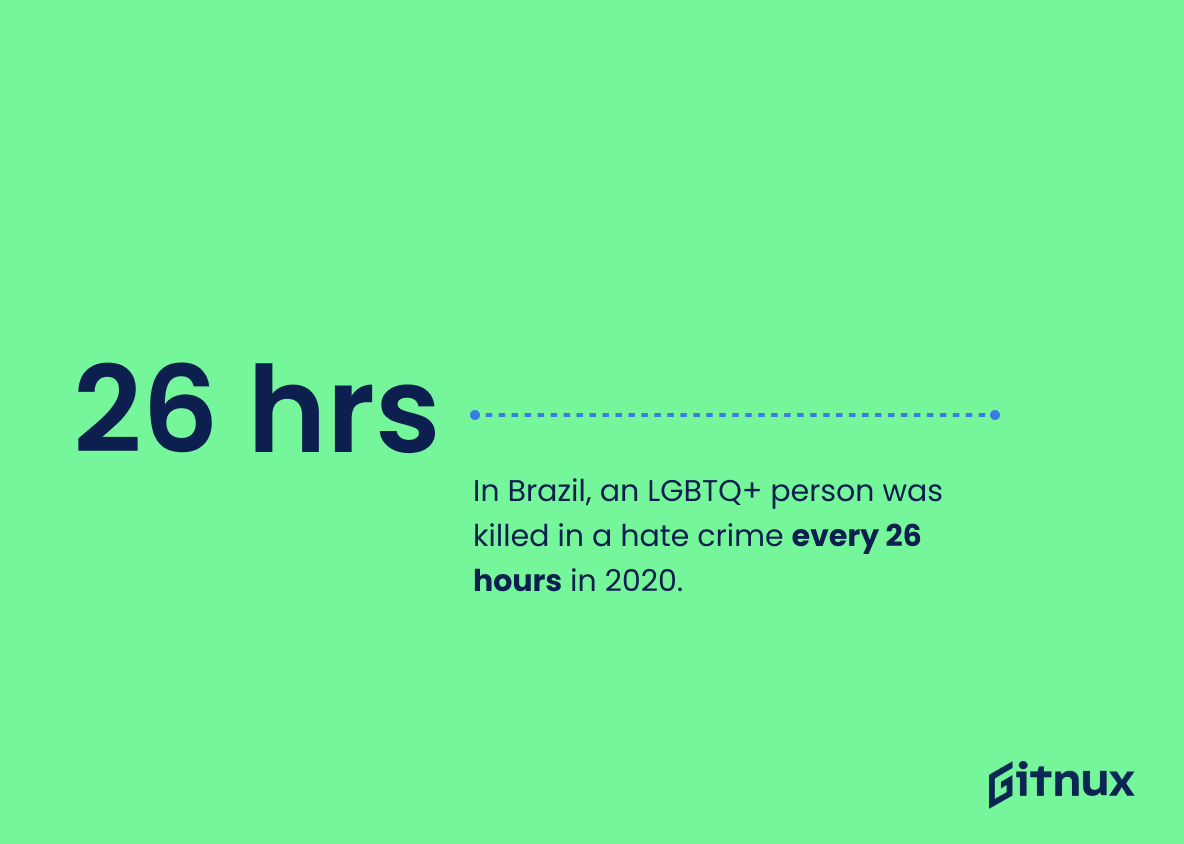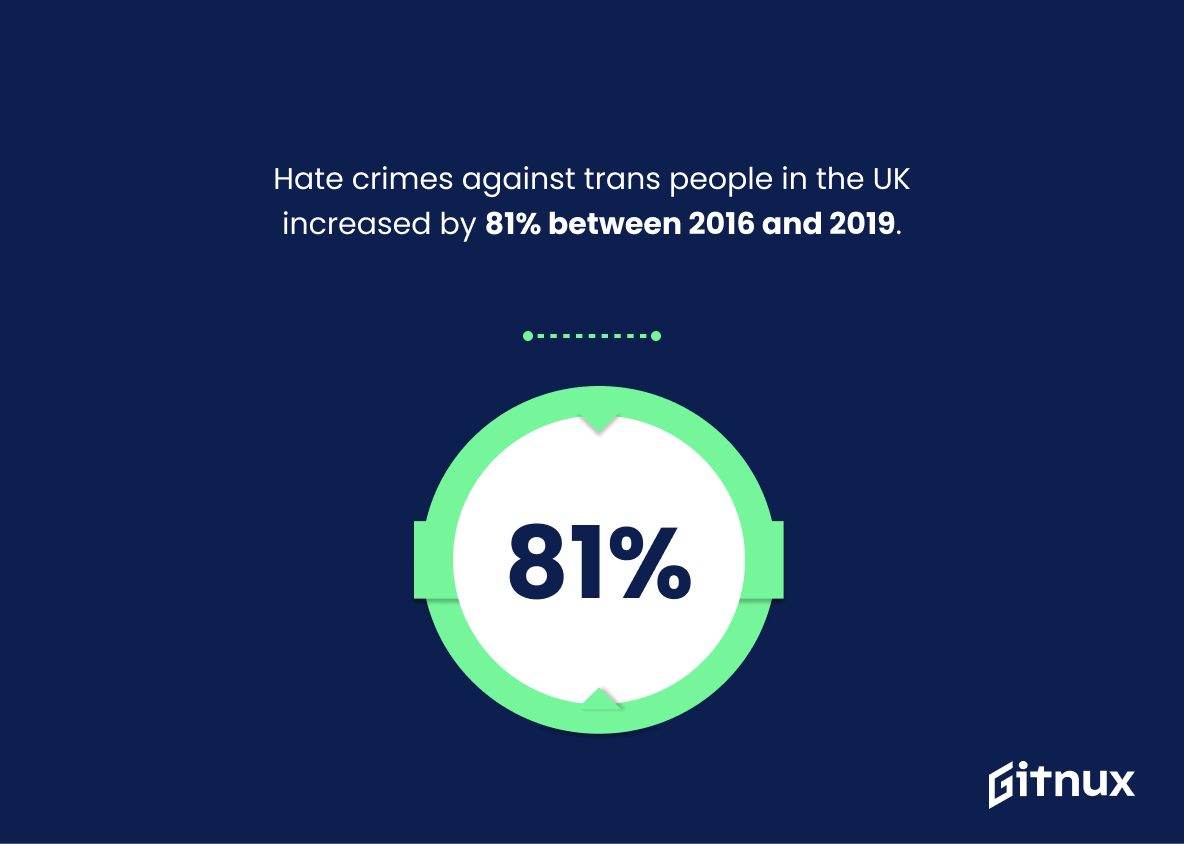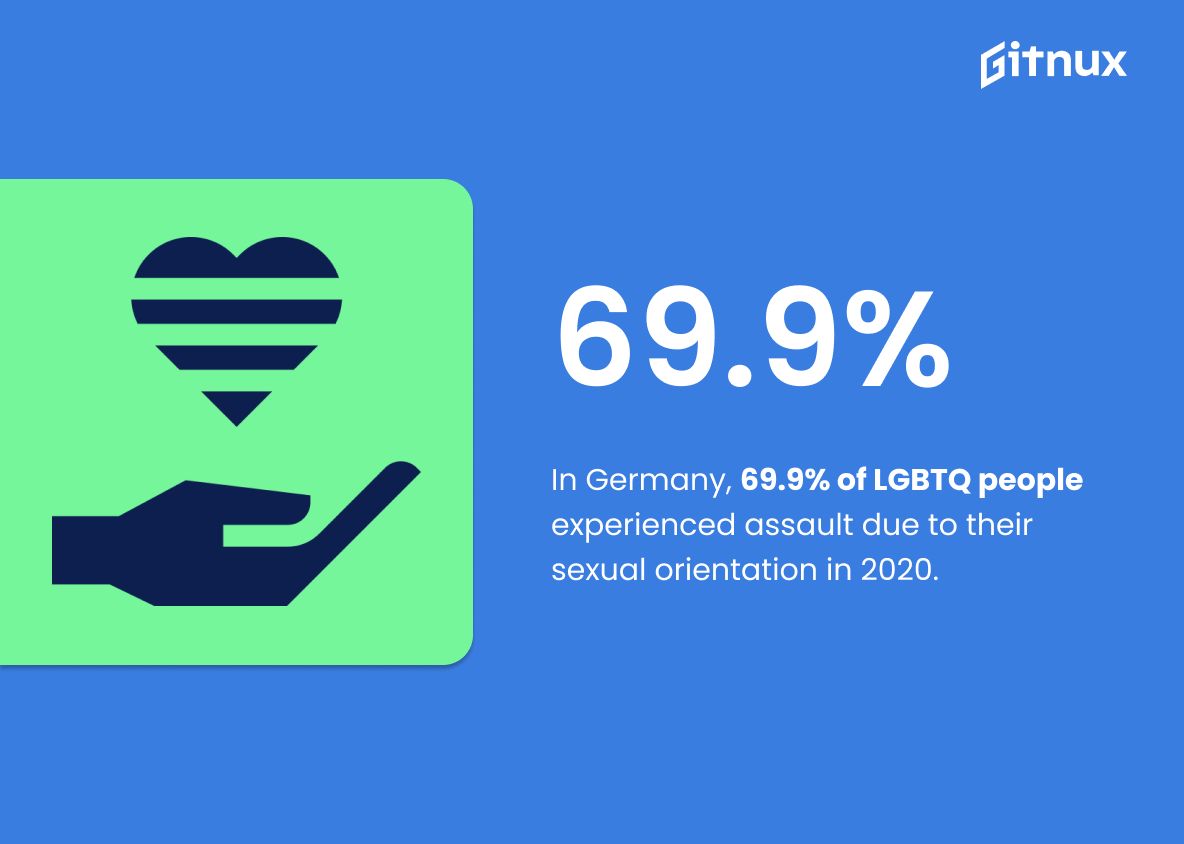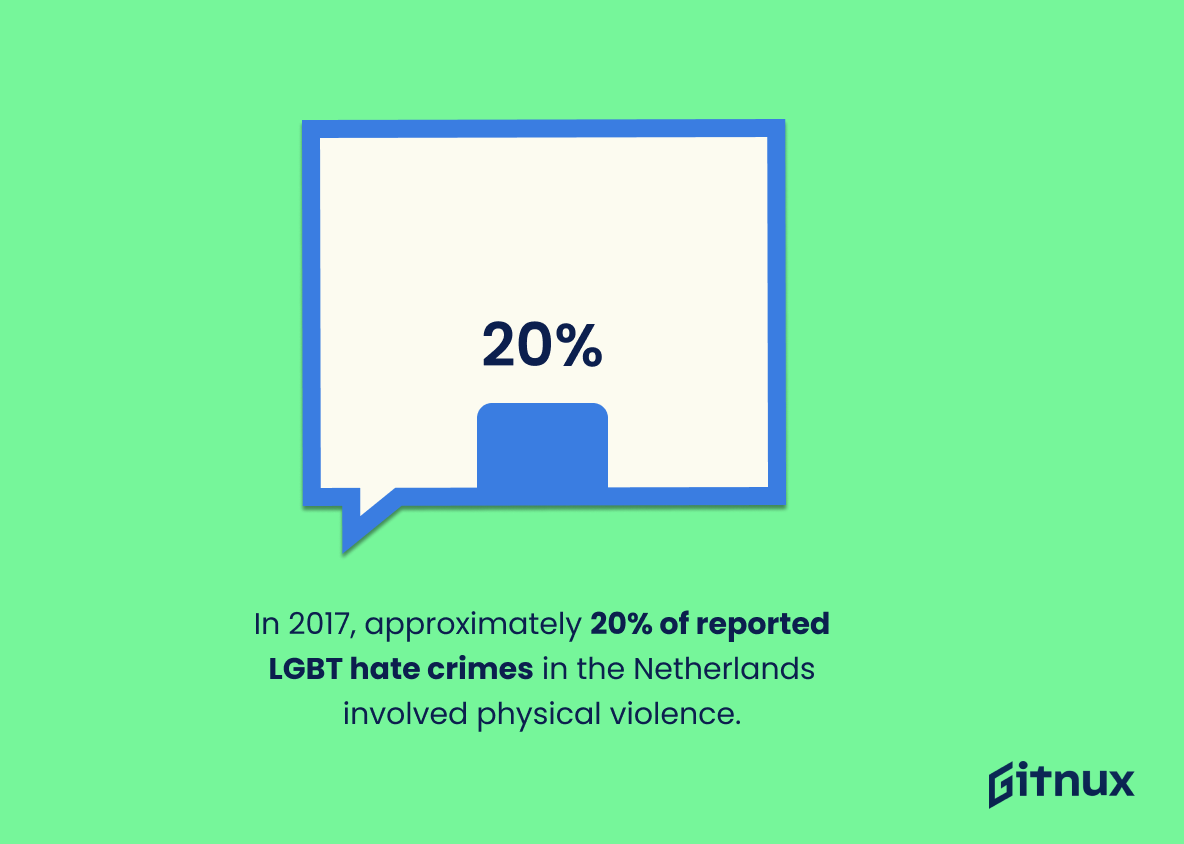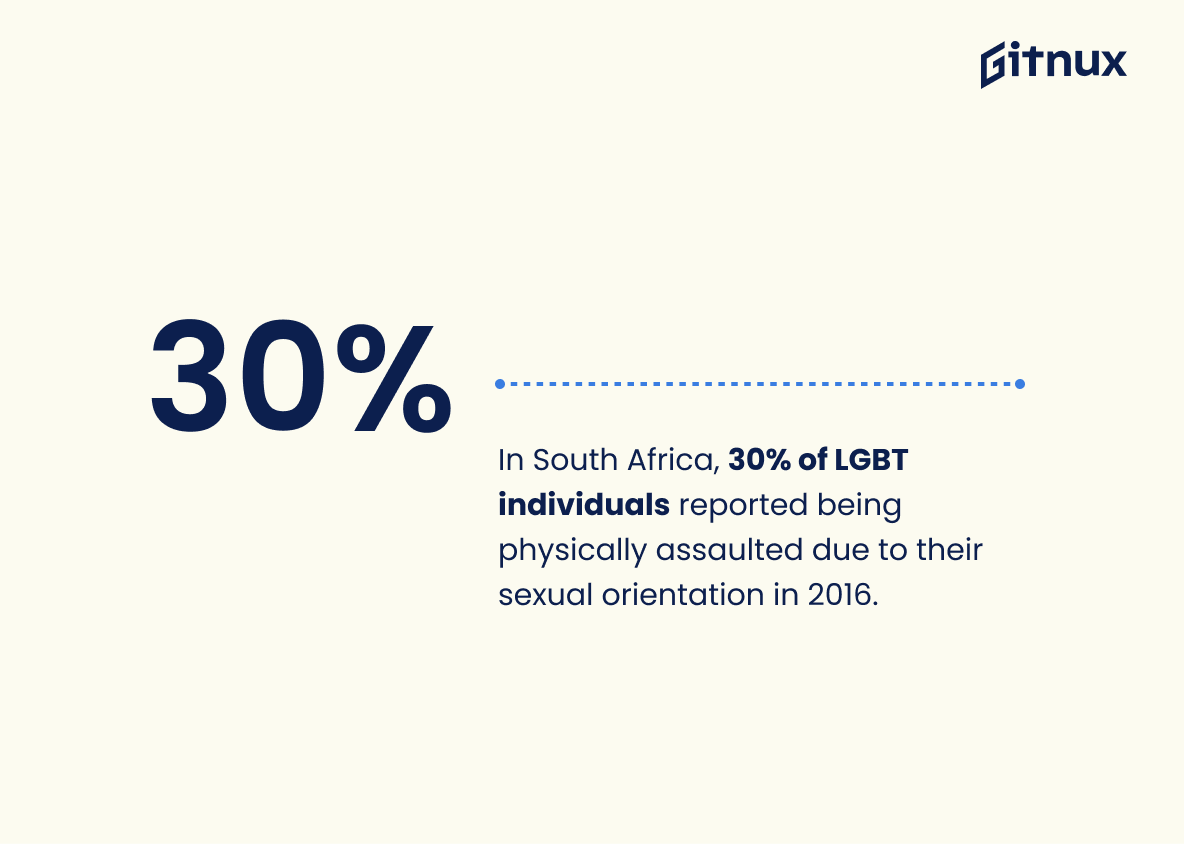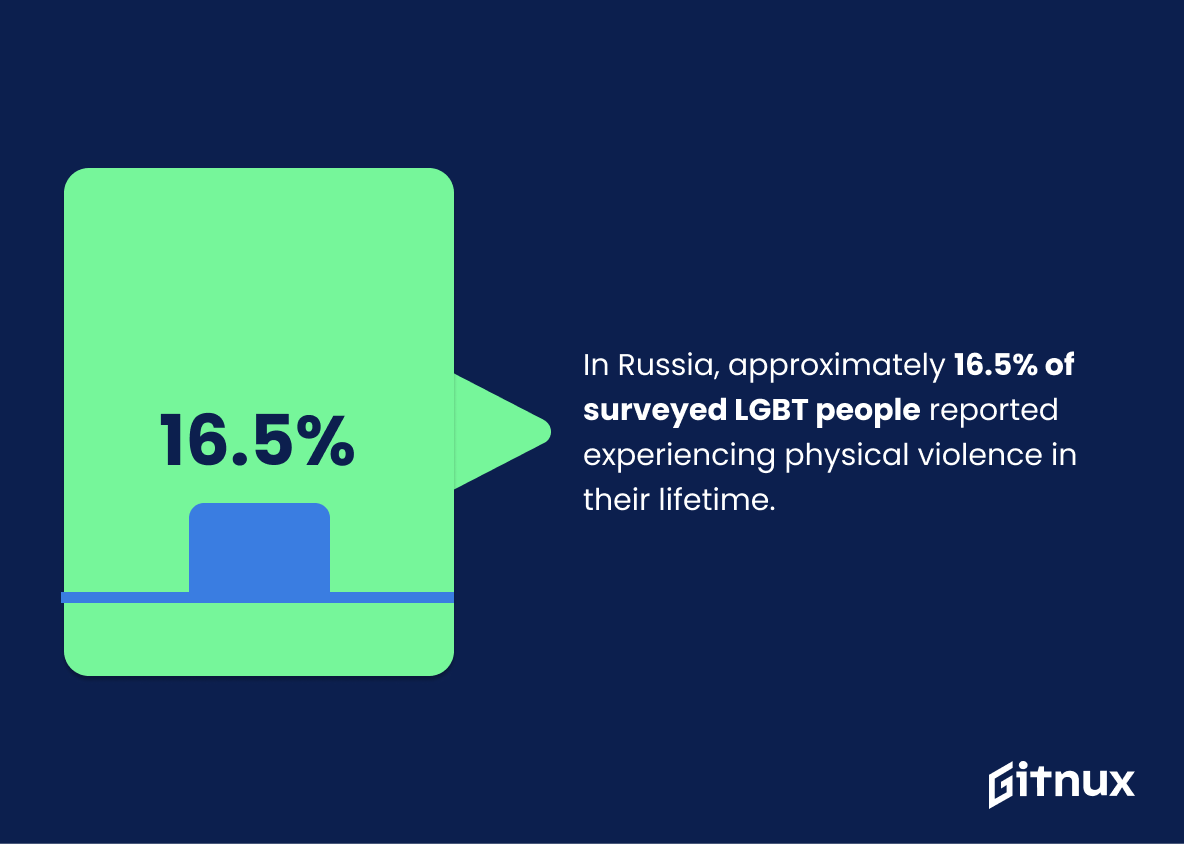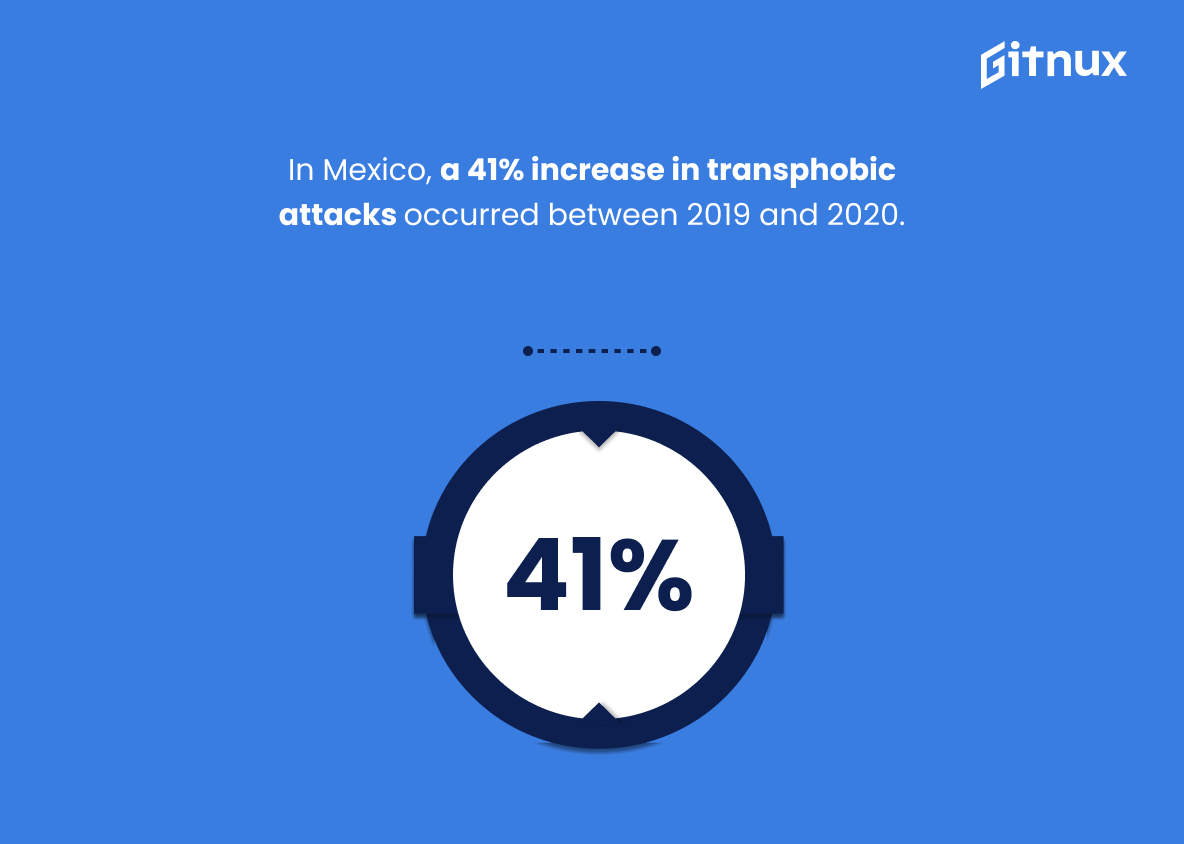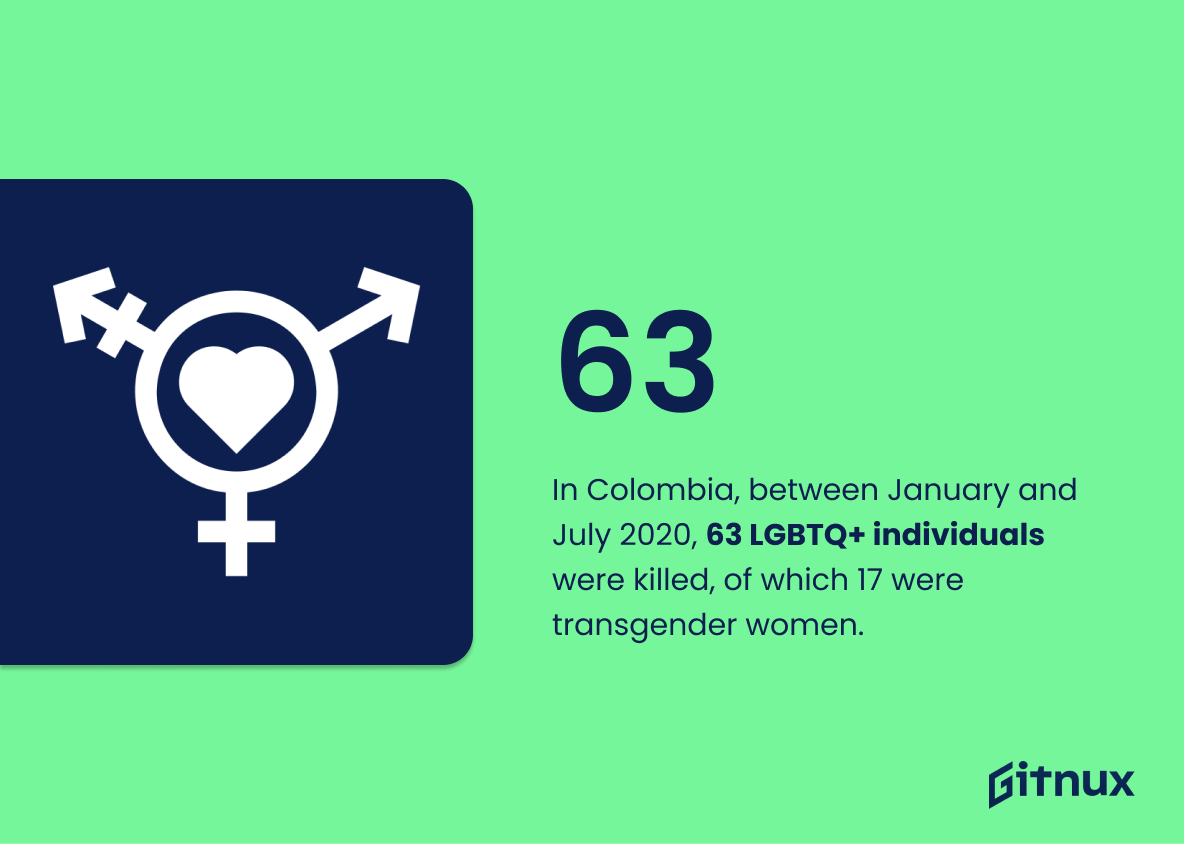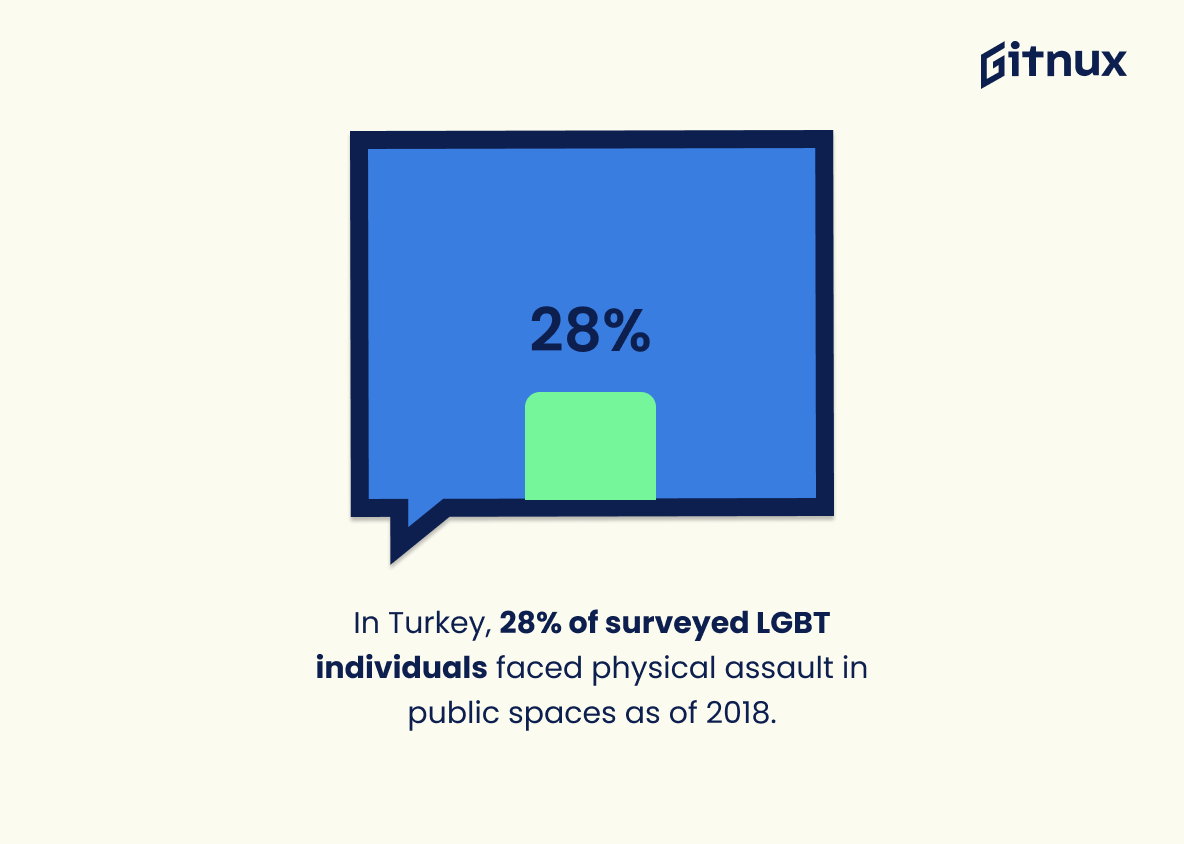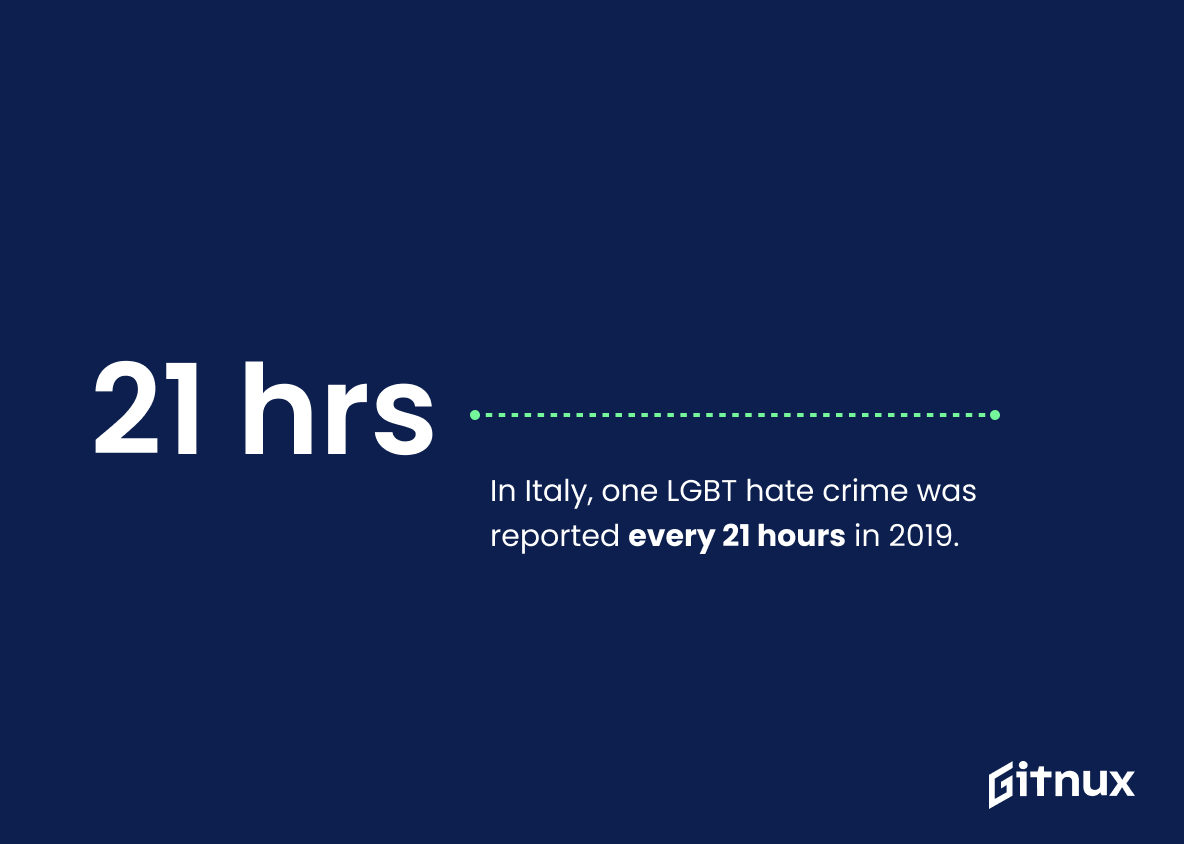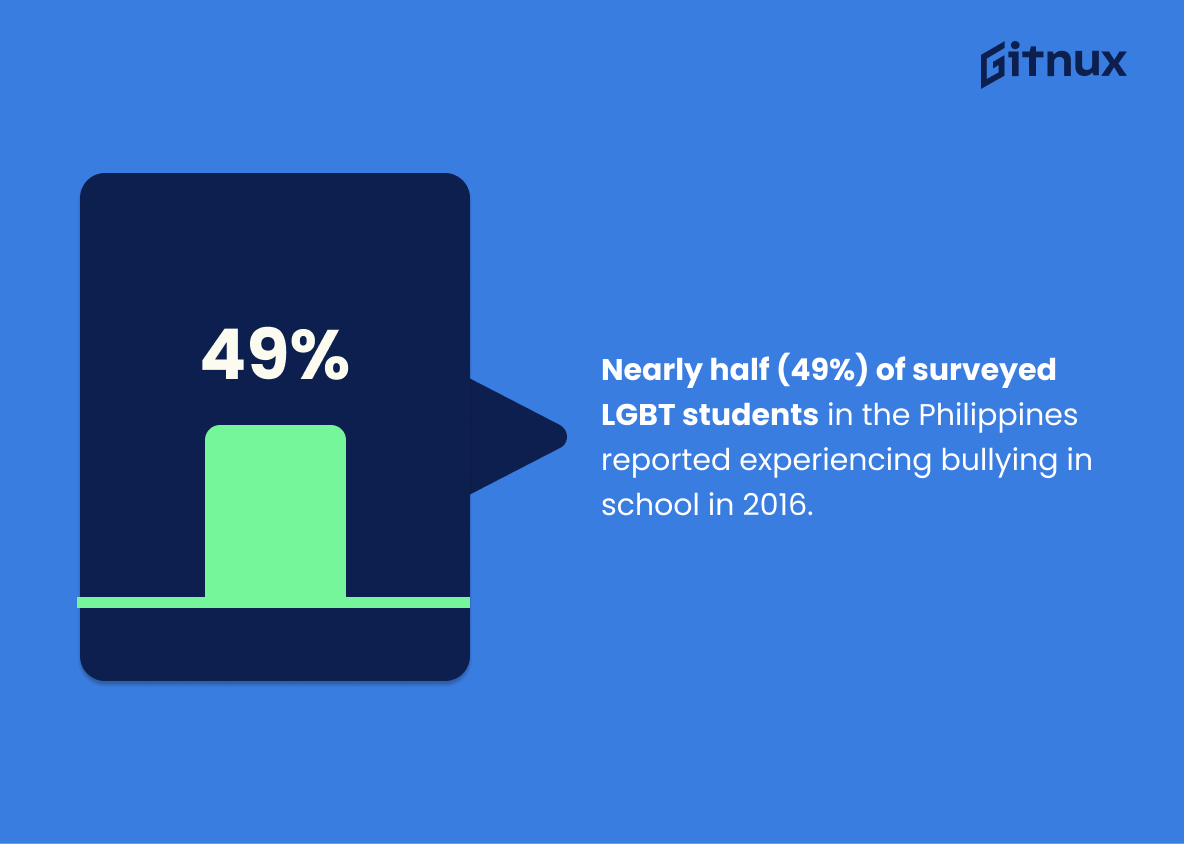The statistics on LGBT assault are alarming. From the US to China, hate crimes against members of the LGBTQ+ community have been increasing in recent years. In 2019 alone, there was an 8.3% increase in reported incidents of hate crime against LGBT people in the US according to FBI data. Similarly, a survey conducted by Stonewall UK revealed that nearly 2 out of 5 (38%) LGBTQ+ individuals experienced some form of hate crime due to their sexual orientation or gender identity within 2018 itself.
Globally, high school students from different countries were found to be particularly vulnerable with 68% experiencing verbal assault because of their sexual orientation as per GLAAD’s report for 2020. The situation is even more dire for Black transgender women who comprised 79% percent anti-LGBTQ homicides reported across America during 2021 according to HRC research findings and 31% Australians faced physical assaults or threats based on Monash University’s landmark study published last year (2020).
In Brazil one person belonging to this minority group was killed every 26 hours while 44 % all Canadian cases involved victims targeted due 81 % surge witnessed between 2016 and 2019 when it comes transphobic attacks recorded in Britain . Germany saw 69 9 % surveyed lgbtq people face abuse streets least once same reason 2020 France 66 rise noted previous two years Netherlands 20 violence 2017 South Africa 30 physically assaulted lifetime 2016 Russia 16 5 lifetime Mexico 41 jump past twelve months Colombia 63 murdered seven month period Turkey 28 public spaces 2018 Italy 21 hour rate 2019 Philippines 49 bullied school Spain 80 harassed university level 2018 China 47 suffered discrimination sixteen .
This statistic is a stark reminder of the reality that LGBT people in the US are facing. It highlights the fact that hate crimes against LGBT people are still a major issue, and that the number of incidents is on the rise. This is a cause for concern, and it is important to raise awareness of the issue and take steps to ensure that LGBT people are safe and protected from hate crimes.
In 2018, nearly 2 in 5 (38%) of the LGBTQ+ community in the UK experienced hate crimes due to their sexual orientation or gender identity.
This statistic is a stark reminder of the discrimination and violence that the LGBTQ+ community still faces today. It highlights the need for greater awareness and understanding of the issues that this community faces, as well as the need for more effective measures to protect them from hate crimes. This statistic is a call to action for everyone to take a stand against hate and intolerance, and to ensure that the LGBTQ+ community is safe and respected.
Lgbt Assault Statistics Overview
In the US, Black transgender women comprised 79% of reported anti-LGBTQ homicides in 2021.
This statistic is a stark reminder of the disproportionate violence faced by Black transgender women in the US. It highlights the urgent need for greater protection and support for this community, which is often overlooked and marginalized. It also serves as a call to action for all of us to take a stand against hate and discrimination and to work together to create a more inclusive and equitable society.
In Australia, about 31% of LGBT people experienced physical assault, harassment, or threats within the last 12 months (as of 2020).
This statistic is a stark reminder of the reality that LGBT people in Australia face on a daily basis. It highlights the prevalence of physical assault, harassment, and threats that LGBT people experience, and serves as a call to action to address this issue. It is a powerful reminder that there is still much work to be done to ensure the safety and security of LGBT people in Australia.
In Brazil, an LGBTQ+ person was killed in a hate crime every 26 hours in 2020.
This statistic is a stark reminder of the violence and discrimination that LGBTQ+ people face in Brazil. It paints a vivid picture of the danger that members of this community face on a daily basis, and serves as a call to action to end this violence and ensure that all people are treated with respect and dignity.
In 2019, 44% of all reported hate crimes in Canada were motivated by sexual orientation.
This statistic is a stark reminder of the prevalence of hate crimes against the LGBT community in Canada. It highlights the need for greater awareness and action to protect the rights of LGBT individuals and to ensure that they are not subjected to discrimination or violence. It also serves as a call to action for governments and organizations to take steps to address this issue and to ensure that all Canadians are treated with respect and dignity.
Hate crimes against trans people in the UK increased by 81% between 2016 and 2019.
This statistic is a stark reminder of the alarming rise in hate crimes against trans people in the UK over the past three years. It serves as a powerful reminder of the need for greater awareness and action to protect the rights of trans people and to ensure that they are not subjected to violence and discrimination.
In Germany, 69.9% of surveyed LGBTQ people have experienced physical or verbal assault on the streets at least once because of their sexual orientation in 2020.
This statistic is a stark reminder of the reality that LGBTQ people in Germany face on a daily basis. It highlights the prevalence of physical and verbal assault that LGBTQ people experience due to their sexual orientation, and serves as a call to action for those who are in a position to make a difference. It is a powerful reminder that more needs to be done to ensure the safety and security of LGBTQ people in Germany and around the world.
In 2017, approximately 20% of reported LGBT hate crimes in the Netherlands involved physical violence.
This statistic is a stark reminder of the prevalence of physical violence against the LGBT community in the Netherlands. It highlights the need for greater awareness and action to protect LGBT individuals from hate crimes and to ensure that perpetrators are held accountable for their actions. It also serves as a call to action for the Dutch government to take steps to ensure that LGBT individuals are safe and protected from violence.
In South Africa, 30% of surveyed LGBT individuals reported being physically assaulted due to their sexual orientation in a 2016 study.
This statistic is a stark reminder of the reality that many LGBT individuals in South Africa face. It highlights the prevalence of physical assault against LGBT individuals in the country, and serves as a call to action for those who wish to protect and support the LGBT community. It is a powerful reminder that there is still much work to be done in order to ensure the safety and security of LGBT individuals in South Africa.
In Russia, approximately 16.5% of surveyed LGBT people reported experiencing physical violence in their lifetime.
This statistic is a stark reminder of the reality that LGBT people in Russia face. It highlights the prevalence of physical violence against LGBT people in the country, and serves as a call to action to address this issue. It is a powerful reminder that there is still much work to be done to ensure the safety and security of LGBT people in Russia.
In Mexico, a 41% increase in transphobic attacks occurred between 2019 and 2020.
This statistic is a stark reminder of the alarming rise in transphobic attacks in Mexico over the past year. It serves as a call to action for the LGBT community and its allies to take a stand against this violence and to work towards creating a more inclusive and safe environment for all.
In Colombia, between January and July 2020, 63 LGBTQ+ individuals were killed, of which 17 were transgender women.
This statistic is a stark reminder of the violence and discrimination that LGBTQ+ individuals face in Colombia. It highlights the disproportionate amount of violence that transgender women experience, with 17 out of the 63 killed being transgender women. This statistic serves as a call to action to ensure that the LGBTQ+ community in Colombia is protected and that their rights are respected.
In Turkey, 28% of surveyed LGBT individuals faced physical assault in public spaces as of 2018.
This statistic is a stark reminder of the reality that LGBT individuals in Turkey face when it comes to physical assault in public spaces. It highlights the need for greater awareness and action to ensure that all individuals, regardless of their sexual orientation or gender identity, are able to feel safe and secure in public spaces.
In Italy, one LGBT hate crime was reported every 21 hours in 2019.
This statistic is a stark reminder of the prevalence of LGBT hate crimes in Italy. It highlights the urgent need for greater awareness and action to protect the LGBT community from violence and discrimination. It also serves as a call to action for the government and other stakeholders to take steps to ensure the safety and security of LGBT individuals in the country.
Nearly half (49%) of surveyed LGBT students in the Philippines reported experiencing bullying in school in 2016.
This statistic is a stark reminder of the discrimination and violence that LGBT students in the Philippines face in their schools. It highlights the need for greater awareness and action to ensure that all students, regardless of their sexual orientation or gender identity, are safe and respected in their learning environments. By bringing attention to this statistic, we can help to create a more inclusive and equitable society for all.
Conclusion
The statistics presented in this blog post demonstrate the alarming prevalence of violence and hate crimes against LGBT people around the world. From an 8.3% increase in reported incidents of hate crime against LGBT individuals in the US to a 66% rise between 2018 and 2019, it is clear that more needs to be done to protect members of this community from discrimination and abuse. In many countries, such as Brazil, Canada, Germany, South Africa and Turkey among others – physical assault due to sexual orientation or gender identity remains disturbingly high with no signs of improvement yet seen. It is essential for governments worldwide to take action now by implementing laws which will ensure greater protection for LGBTQ+ citizens so they can live their lives free from fear or prejudice.
References
0. – https://www.www.hrw.org
1. – https://www.www.stonewall.org.uk
2. – https://www.www.kaosgl.org
3. – https://www.www.dw.com
4. – https://www.www.ansa.it
5. – https://www.ucr.fbi.gov
6. – https://www.www.osf.org.za
7. – https://www.www.hrc.org
8. – https://www.www.bbc.com
9. – https://www.www.equalrightstrust.org
10. – https://www.www.reuters.com
11. – https://www.www.monash.edu
12. – https://www.www.publicsafety.gc.ca
